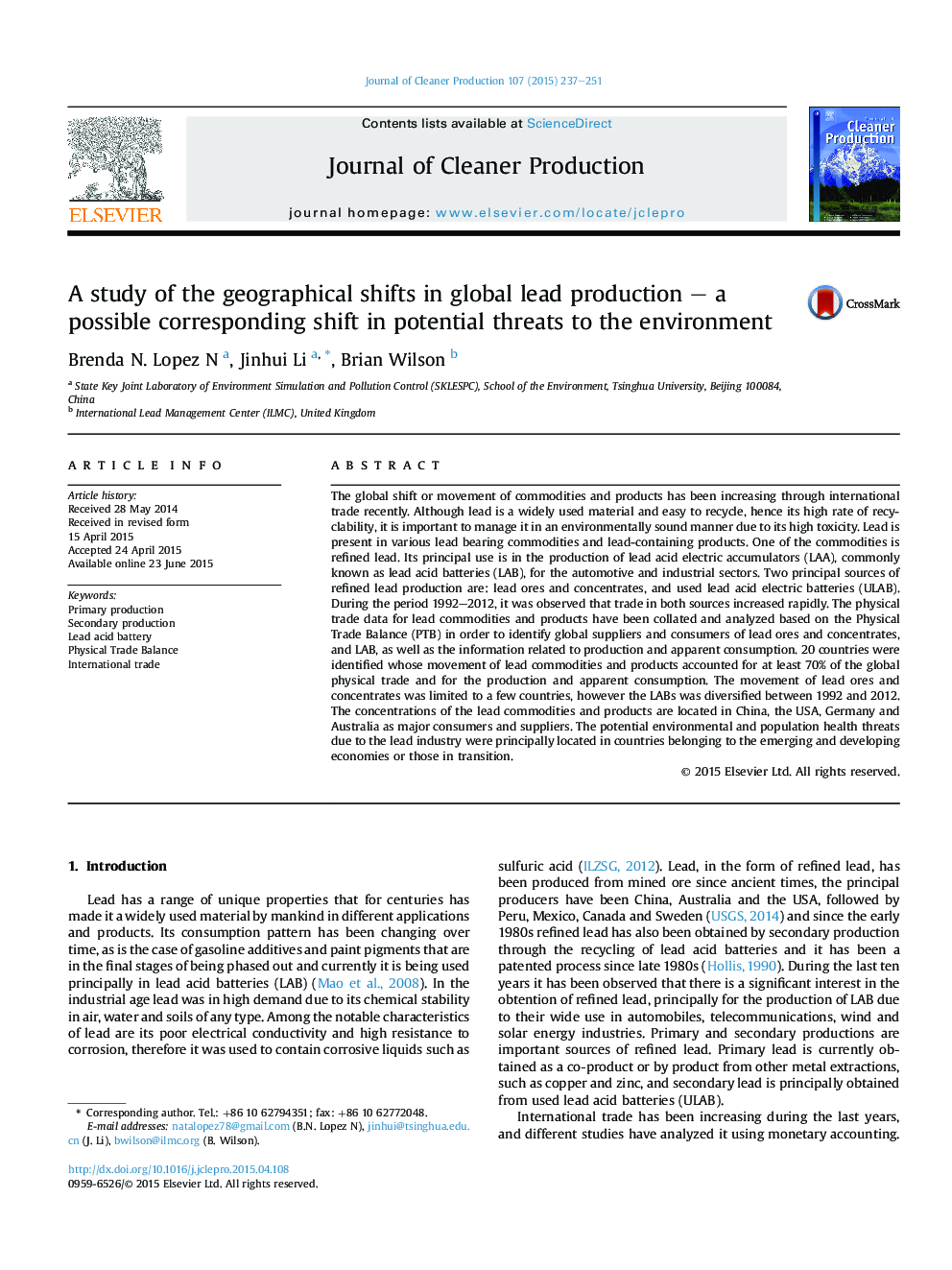| Article ID | Journal | Published Year | Pages | File Type |
|---|---|---|---|---|
| 1744416 | Journal of Cleaner Production | 2015 | 15 Pages |
Abstract
The global shift or movement of commodities and products has been increasing through international trade recently. Although lead is a widely used material and easy to recycle, hence its high rate of recyclability, it is important to manage it in an environmentally sound manner due to its high toxicity. Lead is present in various lead bearing commodities and lead-containing products. One of the commodities is refined lead. Its principal use is in the production of lead acid electric accumulators (LAA), commonly known as lead acid batteries (LAB), for the automotive and industrial sectors. Two principal sources of refined lead production are: lead ores and concentrates, and used lead acid electric batteries (ULAB). During the period 1992-2012, it was observed that trade in both sources increased rapidly. The physical trade data for lead commodities and products have been collated and analyzed based on the Physical Trade Balance (PTB) in order to identify global suppliers and consumers of lead ores and concentrates, and LAB, as well as the information related to production and apparent consumption. 20 countries were identified whose movement of lead commodities and products accounted for at least 70% of the global physical trade and for the production and apparent consumption. The movement of lead ores and concentrates was limited to a few countries, however the LABs was diversified between 1992 and 2012. The concentrations of the lead commodities and products are located in China, the USA, Germany and Australia as major consumers and suppliers. The potential environmental and population health threats due to the lead industry were principally located in countries belonging to the emerging and developing economies or those in transition.
Related Topics
Physical Sciences and Engineering
Energy
Renewable Energy, Sustainability and the Environment
Authors
Brenda N. Lopez N, Jinhui Li, Brian Wilson,
